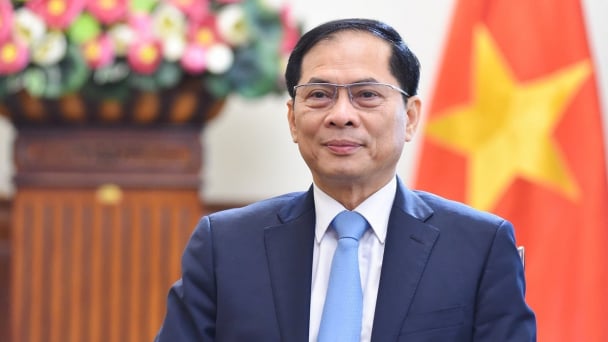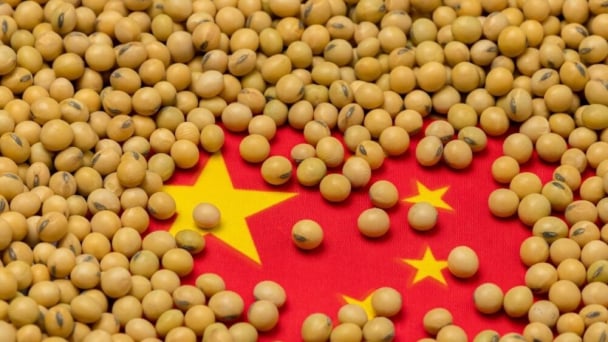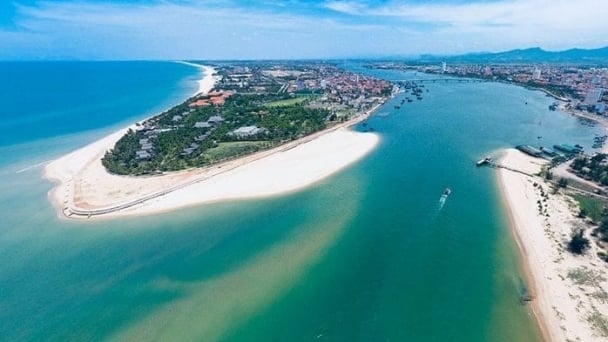April 14, 2025 | 08:13 GMT +7
April 14, 2025 | 08:13 GMT +7
Hotline: 0913.378.918
April 14, 2025 | 08:13 GMT +7
Hotline: 0913.378.918

Mr. Tran Cong Thang, Director of the Institute of Policy and Strategy for Agricultural and Rural Development. Photo: Bao Thang.
The farming industry in general and the rice industry in particular play an important role in the food security of each country, especially in Vietnam - where agriculture is still considered the pillar of the economy.
To clarify this issue, Vietnam Agriculture News interviewed Mr. Tran Cong Thang, Director of the Institute of Policy and Strategy for Agricultural and Rural Development.
First, could you please clarify the concept of food security?
According to the Food and Agriculture Organization (FAO), food security is guaranteed when every household has access to safe and nutritious food, both physically and economically, meeting nutritional needs necessary for living and health.
Ensuring food security includes 4 factors, the first is the availability of food (production meets society's food consumption requirements). The second factor is the stability of the food supply (regular and stable supply, circulation, and distribution of food).
Third is the ability of households to access and pay (people's economic ability to access and buy food). The final factor is ensuring nutrition and food safety (diversifying food types in people's daily meals). This is to ensure nutrition and quality, food safety and hygiene of all types of food).
Ensuring food security does not only mean enough rice but also includes other food products such as meat, fish, vegetables, and other food crops.
However, rice plays a huge role in ensuring food security, rice and products derived from rice are the main source of food and nutrition. Rice is the staple food of nearly half of the world's eight billion people, and over 90% of this rice is consumed in Asia, where rice is a staple food for the majority of the population.

Vietnam has a population of nearly 100 million and on average each person consumes about 83kg/year thus the total amount of rice for household consumption is about 8.5 million tons of rice. Photo: Le Hoang Vu.
So specifically, how is the role of rice in ensuring food security expressed to Vietnamese consumers?
Currently, although there are many changes in the consumption structure of households the economy is increasingly developing when people have many choices for their meals.
Therefore, the amount of rice consumed in household meals also tends to decrease. In the last 5 years alone, the amount of rice consumed per capita/month has tended to gradually decrease from 8.8 kg/person/month in 2016 to 6.9 kg/person/month in 2022. An average decrease of 4%/year.
Households living in rural areas often consume more rice (7.7 kg/person/month) than urban households (5.7 kg/person/month). Households in the poorest group have higher rice consumption than households in the richest group (7.8 kg versus 6.1 kg/person/month).
The main food groups of Vietnamese people include rice, rice-based foods, meats, shrimp and fish, vegetables, fruits, eggs, milk, drinks (wine, beer, other drinks), cooking oil, fish sauce, dipping sauce, peanuts, sesame, beans of all kinds,...
According to data from the 2022 Vietnam Household Living Standards Survey (VHLSS), the average amount of food consumed per capita in Vietnam is 20.2 kg/person/month. As people's income and living standards improve, consumption preferences gradually change towards reducing the amount of rice and increasing foods with higher nutrition such as meat, eggs, milk, and seafood.
In the period 2016-2022, meat and fruit consumption volume tend to increase (VHLSS, 2016-2022), the average amount of meat consumed increased from 2.1 kg/person/month to 2.6 kg/person/month (an increase of 23.8% compared to 2016); the amount of fruit increased from 0.9kg/person/month to 1.2kg/person/month (an increase of 33.3% compared to 2016).
Although the amount of rice consumed tends to decrease, in terms of quantity, rice still accounts for more than 1/3 of the total volume of staple foods. Next is the meat group, vegetable group and fruit group.
In 2022, the total rice consumption volume nationwide accounts for 34.2% of the total food consumption volume, this rate for the rural population is 37.2% and the poorest group (20% of people with the lowest income) is 43.9%. Thus, overall, rice still plays a very important role in ensuring household food security.

If current production levels are maintained and there are no storms, floods or widespread crop failures, Vietnam will ensure domestic consumption needs and can still export about 6 million tons of rice each year. Photo: Le Hoang Vu.
That's in terms of quantity, so in terms of value, what percentage of the total household spending does the current spending on rice and food consumption of Vietnamese people account for?
According to VHLSS 2022, in terms of value, the average spending on rice by Vietnamese people is about VND 120,000/person/month, accounting for only 9.4% of total spending on food and about 4.3% of total spending per capita/month.
For rural areas, on average per month, rural people spend about VND 135,000/person on rice, accounting for about 11.5% of total spending on food and beverage and 5.4% of total general spending. In urban areas, people spend nearly VND 100,000/person/month on rice, accounting for about 6.8% of total food and beverage expenditures per capita/month and 3.1% of total general expenditures per capita/month.
The rate of spending on rice is low, but Vietnamese people's spending on food consumption still accounts for a high proportion of total household spending. According to the 2022 household living standards survey data, average household spending is approximately VND 2.8 million/person/month. Of which, spending on food and beverage is approximately VND 1.3 million, accounting for 46%. The proportion of spending on food and beverage of rural people accounts for 47% of total spending, higher than that of urban people (45% of spending on food and beverage).
With such a level of rice consumption, can it be said that Vietnam's rice production always ensures national food security, even in the coming time when the population increases and the world experiences many changes?
Currently, Vietnam has a population of nearly 100 million and on average each person consumes about 83kg/year thus the total amount of rice for household consumption is about 8.5 million tons of rice.
Besides household consumption, rice is also used as animal feed and as a raw material for other food industries, rice noodles production, reserve and share part of the rice for seed.

Vietnam is capable of ensuring food security with its current rice output. Photo: Tung Dinh.
Currently, according to calculations by the Institute of Policy and Strategy for Agricultural and Rural Development, these needs are about 16-17 million tons of rice each year. Rice production meets domestic demand and every year Vietnam exports 6-7 million tons of rice/year. As of 2022, Vietnam's rice exports will reach 7.1 million tons.
However, as mentioned above, when mentioning the issue of rice production, we mainly mention the first and second factors of "Food Security". In addition, there are two other very important factors: affordability and ensuring nutrition for people. It is necessary to ensure that they always have money to buy nutritious food.
Thank you, Sir!
Translated by Hoang Duy

(VAN) According to Deputy Prime Minister Bui Thanh Son, through this P4G Summit, Vietnam aims to convey the message of transforming its growth model towards rapid and sustainable development.

(VAN) Soybean production has been a priority for China to ensure food security, with increased soybean cultivation and yields highlighted in the annual No. 1 Central document.

(VAN) Vietnam Sea and Islands Week 2025 is expected to take place in Quang Binh, featuring a series of meaningful activities aimed at protecting the ocean through green technology solutions.

(VAN) The One Health approach is no longer merely an option, as increasingly complex challenges confront health and food systems.

(VAN) The project promoting sustainable coffee production, with a focus on waste management and raising farmers’ awareness, has achieved many positive results after nearly two years of implementation.

(VAN) Transferring and receiving 6 individuals of the red-crowned crane from Thailand to Vietnam marks a significant milestone in the conservation efforts for this species.

(VAN) After more than a year of implementation, the One Million Hectares of High-Quality, Low-Emission Rice project has completed the first steps, but it needs breakthrough solutions to deepen impacts in the upcoming phase.